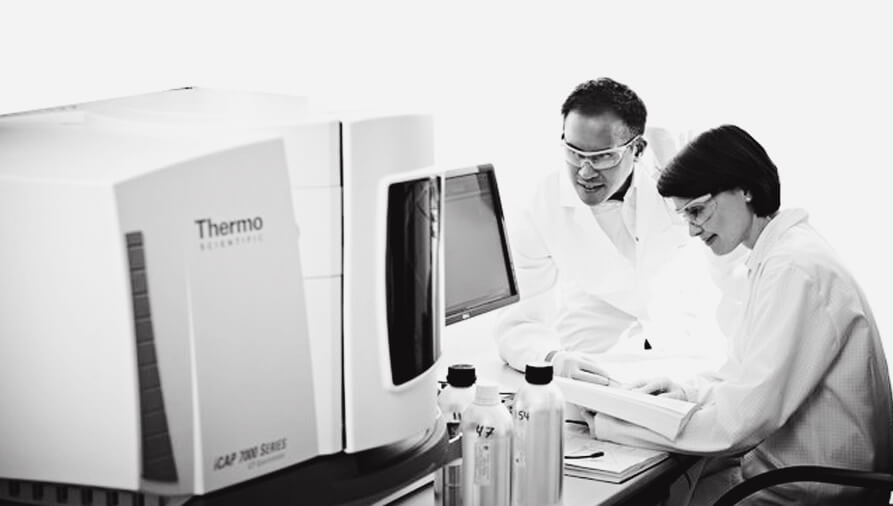ICP analysis (ICP-MS and ICP-AES) in Laboratory

The 6NAPSE Group laboratories carry out chemical analysis and elementary assays by ICP.
What is ICP ?
Inductively Coupled Plasma (ICP) spectrometry is a device that performs the multi-element assay of any type of matrix. This method makes it possible to carry out very precise assays, from the order of PPM to PPB.
ICP analysis
The 6NAPSE Group laboratories measure the content of an element present in a sample. This technique is applicable to all types of elementary chemical elements.
/1/
Mineralization
The step consists of changing the sample from a solid to a liquid state using a mixture of strong acids or microwaves. The advantage of this method? It dissolves all types of materials: glass, metals, ceramics, etc.
/2/
Introduction of the solution into the inductively coupled plasma
The liquid sample (prepared beforehand during digestion) is transformed into an aerosol. It is then exposed to an Argon plasma where it is desolvated, atomized and ionized.
/3/
Detection
The laboratory performs the elementary assay for the chemical characterization of the compound.
Applications
ICP analysis is recurrent in the world of industry to carry out different assays:
- Trace of heavy metals: Mercury, Lead, Cadmium, Cobalt, Osmium, etc.
- Elemental Impurities (ICH Q3D, USP 233, Consumer Goods: California Proposition 65, Wastewater, Glass, Medical Devices, Food, …)
- Verification of material conformity (identification of the nature of a metal, verification of a dosed addition, etc.)
- Rare earths (Scandium, Yttrium, Lanthanum, Cerium, Neodymium, Samarium, Gadolinium, …)
6NAPSE Group assets
- A laboratory specializing in chemical analysis
- Large material databases
- Urgency and short deadlines
- Our technical experts are available to discuss your analytical needs, with the appropriate benchmarks and standards.
Technical characteristics
ICP-AES (atomic emission spectrometer)
It measures the wavelengths emitted by the ions. The thermal excitation of the ions (at 8000°C) then causes a characteristic light emission (or wavelength) when the element returns to its ground state (non-excited).
Particularity: we have the radial sight. The plasma is perpendicular to the entrance of the detector which allows the analysis of more charged solutions. For the axial sighting, the configuration is horizontal, which increases the sensitivity of the technique (up to µg/L).
ICP-MS (mass spectrometer)
It separates the ions from each other by applications of electromagnetic fields according to their electric charge, their atomic mass and their speed.
The two techniques are complementary on the type of information to be obtained as well as on the measurement precision (of the order of ppb depending on the matrices).
Contact us to discuss your needs quickly and technically!
